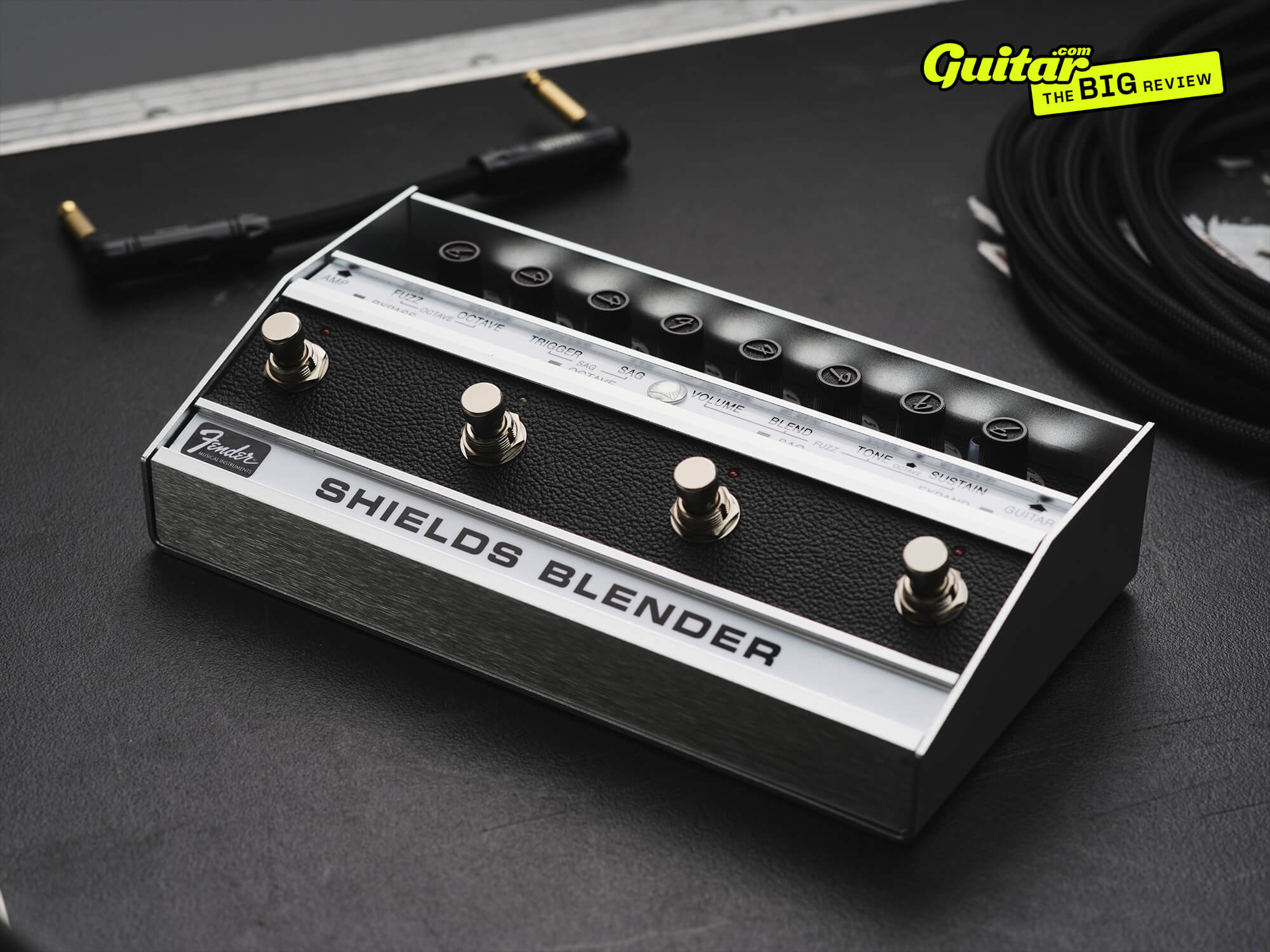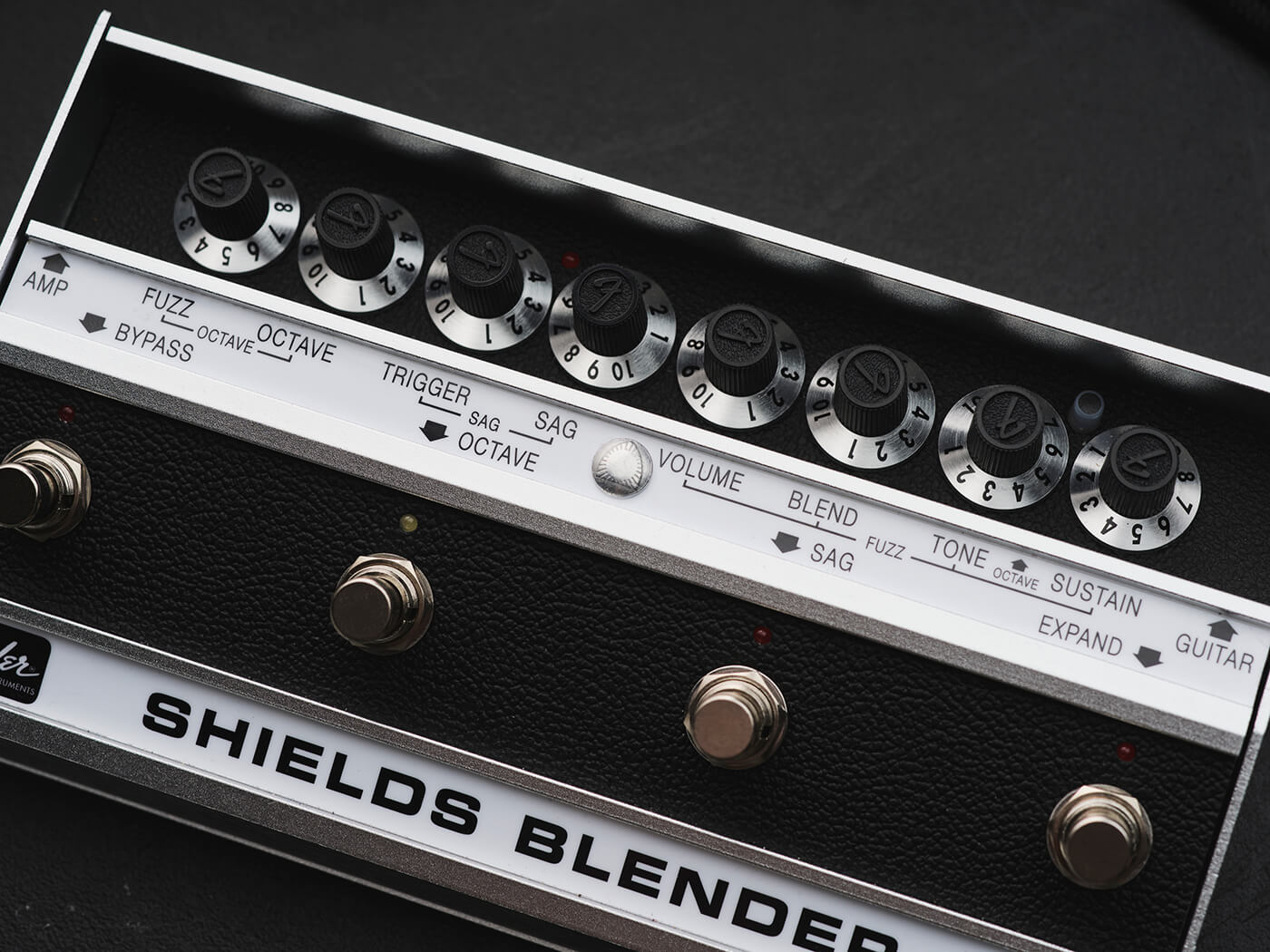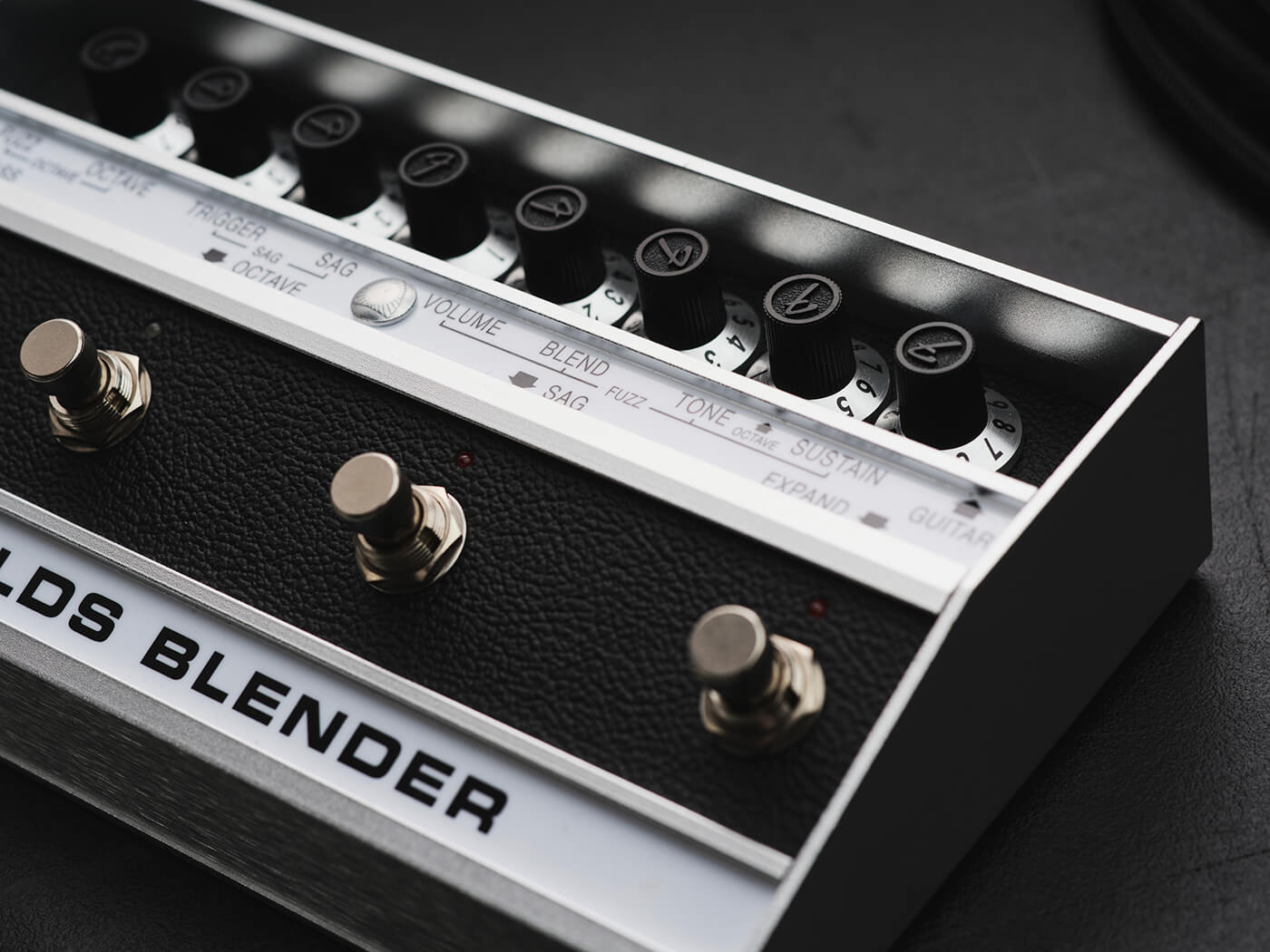The Big Review: Fender Shields Blender – it’s My Bloody Valentine in a box! Or is it?
Fender’s first-ever signature fuzz pedal is a collaboration with Kevin Shields… and promises to be the perfect brick for building walls of noise

Fender Shields Blender. Image: Adam Gasson
Review Overview
Our rating
8
Our verdict
$299/£279 (non-limited version), fender.com
My Bloody Valentine frontman Kevin Shields is the sloth of rock, shuffling down from his tree once every 20 years or so to squeeze out another album. The main reason he’s allowed to do this is Loveless. Released in 1991, MBV’s densely radiant masterpiece shook up the indie scene, gave ‘shoegaze’ its holy grail and, if you’ll forgive just a smidgen of hyperbole, reinvented the electric guitar.
So… Loveless in pedal form, anyone?
- READ MORE: Kevin Shields – “Fender were the first brand to ever really ask me to do a signature pedal”
That’s what Fender is offering with its Shields Blender, an octave fuzz pedal designed in collaboration with the man himself. The unit we have is made in the USA, hand-signed by the man himself, and limited to just 700 units worldwide. However, Fender has recently announced a non-limited version that’s identical bar the pen-scribble and is made in China, and $200 cheaper.
The pedal is the first bit of guitar kit Shields has ever put his name to, and it’s based on his own vintage Fender Blender – only with four footswitches instead of two, and eight control knobs instead of four.
This, then, could be more than just a shortcut to the ‘wall of noise’ fuzz tones that defined MBV’s mature sound (don’t listen to the early stuff, it’s terrible). As well as replicating the controls of the original 1968 unit – volume, sustain, tone and blend, with the second footswitch engaging a treble boost – this version adds a switchable down-octave and a voltage sag circuit for, according to Fender, “imploding fuzz tones”. You also get a push-button switch for engaging the up-octave circuit.
If that’s starting to sound like a complicated stompbox, it most certainly is. But while the markings on the central control panel are not about to win any design awards for clarity, you will master it quickly enough – the trick is to divide the knobs into three groups.

The four controls of the original Blender, as listed above, are found on the right half of the unit, along with the (rather cramped) octave button. Then, moving leftwards, we find a pair of dials for the voltage sag – amount of sag and trigger level – and finally, another pair for the down-octave, letting us adjust its output level and fuzziness.
The footswitches are not in any way aligned with the knobs, which is confusing from the off. But the real oddity here is that, while three of them have little red LEDs that light up when engaged, the down-octave’s LED is orange/red when it’s bypassed and turns white when it’s on. There’s a perfectly good explanation for this, and it’s… no, sorry, there isn’t, it’s nuts.
One more significant update from the 1968 design is that this time the guitar input is on right and the amp output on the left, just as they are on virtually every other guitar pedal in the universe these days. If you have a problem with that, you’re nuts.
All those acres of aluminium make for a fairly heavy unit, and the Shields Blender does feel moderately sturdy if not exactly reeking of high-end quality. The F-topped skirted knobs look suitably retro, as does the textured black vinyl around the footswitches. If you care about manufacturing origins, this one is made in China too with just the final assembly happening in the USA.

In Use
Right, shall we whip out the old Les Paul and start running through those old blues-rock riffs? Nah, don’t worry: my trusty first-year AVRI Jazzmaster is ready for action, and I’ve got my hand resting on the trem ready for those woozy chord bends.
So, first up it’s the basic fuzz sound with no fancy stuff added. As expected, it’s big and fluffy, even with the sustain at minimum. It’s also very dark and woolly, even with the tone at maximum. This might be a handy foundation on which to layer a bunch of other guitar tracks, but on its own it feels too muffled to be of much use. Luckily, there’s a footswitch marked ‘expand’ that can lift us right out of the gloom.
Now we’re dealing with a proper full-frequency fuzz tone, bright and biting but not too abrasive, with a gain range that goes from huge to absolutely colossal. Much depends on what’s going on in the rest of the signal chain, of course, but this does feel a lot like the spirit of Loveless just waiting to be unleashed.
The up-octave tips things over the edge into proper nastiness, and you’d be well advised to use that button sparingly. Perhaps that’s why Fender’s designers hid it in such an awkward corner – although the way it lights up when pressed is mighty cool. Anyway, if you are looking for metallic sheets of near-atonal fuzz, here’s where you’ll find them.

Predictably enough, the down-octave takes us in a very different direction. This part of the Shields Blender comes straight from the Beetronics school of lunacy, with glitchy tracking that makes notes jump up and down like a teenage indie kid who’s had too much snakebite and black. It could have creative uses, but again, it’s a niche effect that you won’t want to slap over everything.
The voltage sag function pushes things to an even stranger place, and it’s hard to imagine anyone wanting to stay there very long. If the word ‘sag’ makes you think of old-fashioned rectifier valve compression, be prepared for something quite different: there’s an LED that flickers on when you hit the threshold, but this is not accompanied by any obvious flattening of the pedal’s output. What you get instead is a brief cutting-out of the signal as it peaks, which is super-quirky but can quickly get maddening.
Still, it is called the Blender for a reason – and as long as you’re running into an amp that’s already distorted, using the blend control can help to tame this effect, so you’re effectively jumping semi-randomly between two levels of noisiness.

That blending function does have its uses in non-glitching mode as well, combining with the tone control and the ‘expand’ footswitch to really open up the pedal’s tonal palette. And that, fruity extra features aside, is what makes the Shields Blender an interesting tool for fuzzy soundscapers.
The best news of course is that you can now get your hands on one without having to pay scalper prices – in fact, as it’s cheaper than ever, there’s never been a better excuse to embrace your sonic weirdness.




